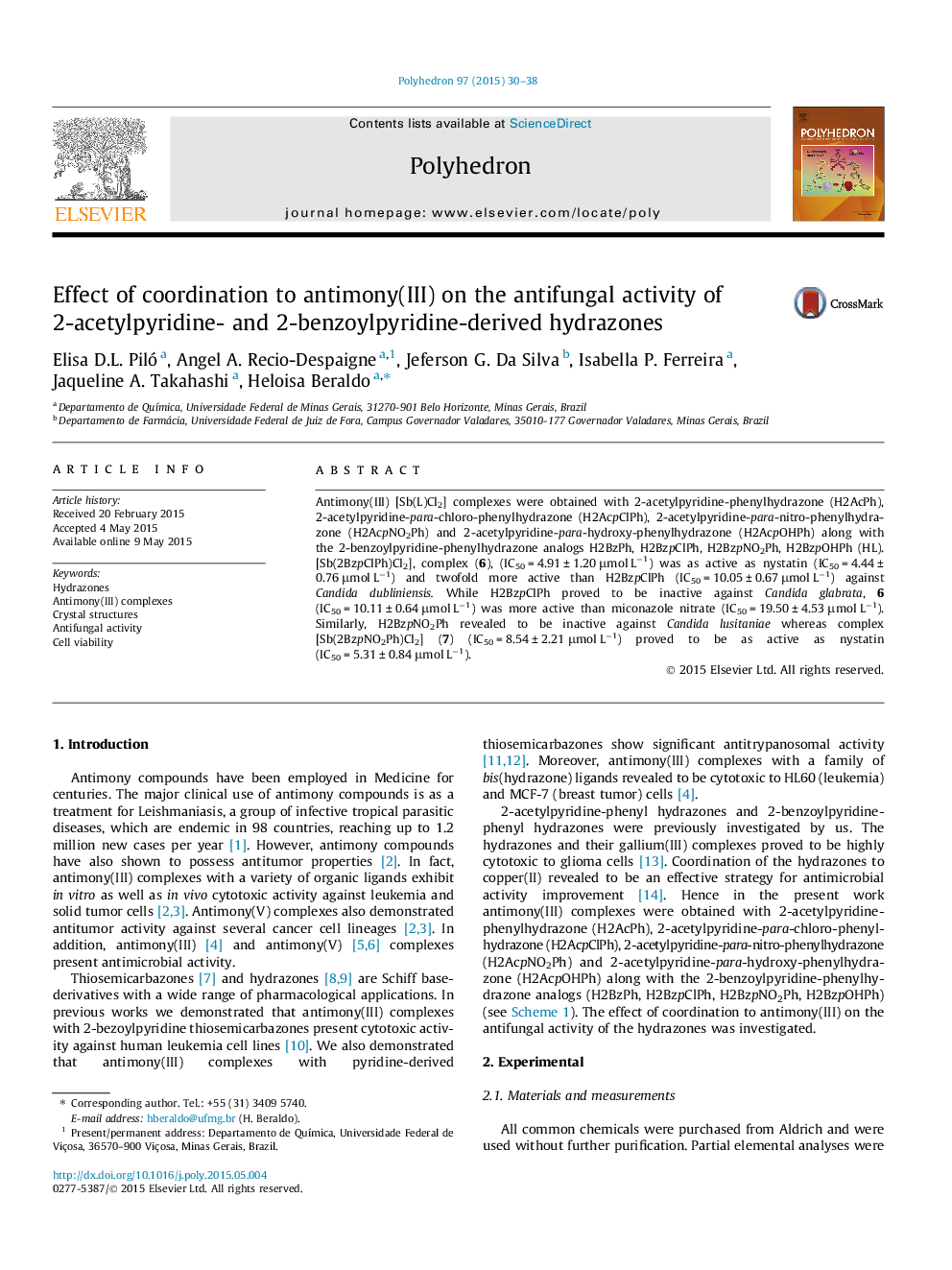| Article ID | Journal | Published Year | Pages | File Type |
|---|---|---|---|---|
| 1335187 | Polyhedron | 2015 | 9 Pages |
Antimony(III) [Sb(L)Cl2] complexes were obtained with 2-acetylpyridine-phenylhydrazone (H2AcPh), 2-acetylpyridine-para-chloro-phenylhydrazone (H2AcpClPh), 2-acetylpyridine-para-nitro-phenylhydrazone (H2AcpNO2Ph) and 2-acetylpyridine-para-hydroxy-phenylhydrazone (H2AcpOHPh) along with the 2-benzoylpyridine-phenylhydrazone analogs H2BzPh, H2BzpClPh, H2BzpNO2Ph, H2BzpOHPh (HL). [Sb(2BzpClPh)Cl2], complex (6), (IC50 = 4.91 ± 1.20 μmol L−1) was as active as nystatin (IC50 = 4.44 ± 0.76 μmol L−1) and twofold more active than H2BzpClPh (IC50 = 10.05 ± 0.67 μmol L−1) against Candida dubliniensis. While H2BzpClPh proved to be inactive against Candida glabrata, 6 (IC50 = 10.11 ± 0.64 μmol L−1) was more active than miconazole nitrate (IC50 = 19.50 ± 4.53 μmol L−1). Similarly, H2BzpNO2Ph revealed to be inactive against Candida lusitaniae whereas complex [Sb(2BzpNO2Ph)Cl2] (7) (IC50 = 8.54 ± 2.21 μmol L−1) proved to be as active as nystatin (IC50 = 5.31 ± 0.84 μmol L−1).
Graphical abstract[Sb(2BzpClPh)Cl2], complex (6), was as active as nystatin and twofold more active than the free hydrazone H2BzpClPh against Candida dubliniensis. While H2BzpClPh proved to be inactive against Candida glabrata, complex (6) was more active than miconazole nitrate.Figure optionsDownload full-size imageDownload as PowerPoint slide
